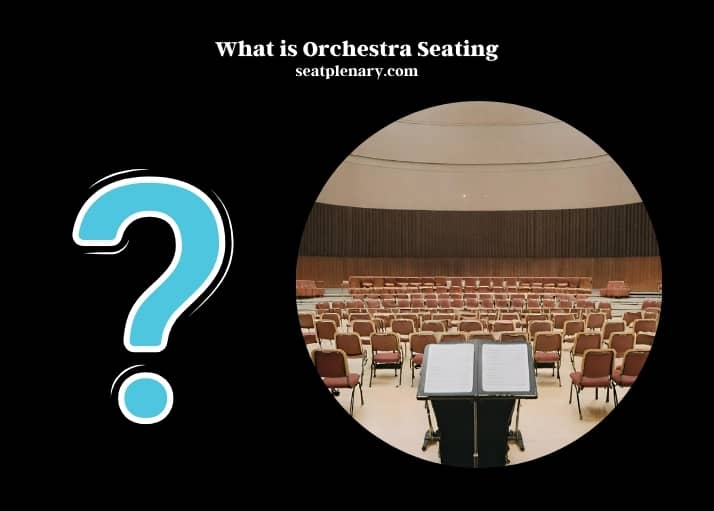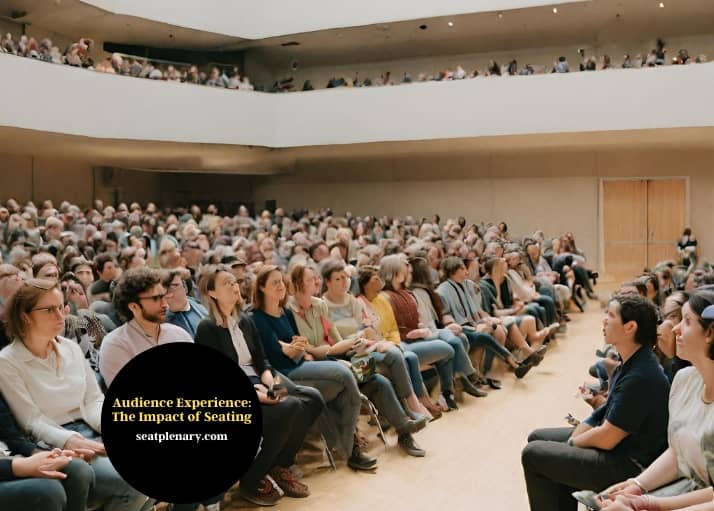Orchestra seating refers to the group of seats located on the main floor of a theater, closest to the stage. This area is known for providing an intimate experience with the performance.
Orchestra seating is a key element in theater design, valued for its proximity to the stage and the immersive experience it offers. These seats are typically arranged in a way that ensures optimal visibility and acoustics, allowing audience members to fully engage with the performance. The design of orchestra seating varies from theater to theater, influenced by architectural style, the type of performances hosted, and audience preferences.

In traditional proscenium theaters, the orchestra section is usually flat or slightly inclined, while modern venues might feature more innovative layouts to enhance the viewing experience. The importance of orchestra seating extends beyond just the physical arrangement; it also plays a significant role in the overall atmosphere of a theater.
Being the closest to the stage, these seats often carry a premium, reflecting the high demand for an up-close and personal encounter with the arts. The evolution of orchestra seating continues as theaters strive to improve accessibility and comfort, ensuring that this prime viewing area remains a coveted spot for theater enthusiasts.
Orchestra Seating: Origins and Evolution
Orchestra seating, integral to the theater experience, has a rich history. Its origins can be traced back to ancient Greek amphitheaters, where the term ‘orchestra’ originally meant the circular space used by chorus members during performances. Over the centuries, this concept evolved significantly. In the Renaissance, the focus shifted to accommodating viewers, leading to the development of the proscenium arch theaters, where orchestra seating gained prominence.
The 18th and 19th centuries saw further refinements with the introduction of tiered seating and improved sightlines, enhancing the audience’s engagement with the performance. This evolution reflects not just architectural advancements but also changing perceptions of the cultural importance of theater in society.
Modern Theater: Orchestra Seating Design
Today’s orchestra seating is a product of meticulous architectural planning, designed to optimize both acoustics and visibility. The layout typically involves a gradual incline, ensuring an unobstructed view for each patron. Acoustic considerations are paramount, with materials and shapes chosen to enhance sound quality.
Modern theaters also prioritize accessibility, ensuring that orchestra seating is inclusive for all audience members. This section of a theater is no longer just about viewing a performance; it’s about experiencing it in a space where every design element enhances the overall impact.
Global Perspectives: Orchestra Seating Variations
Orchestra seating varies significantly across global venues, reflecting cultural nuances and architectural styles. For instance, the Vienna State Opera boasts a traditional horseshoe-shaped design, emphasizing intimacy, while the Sydney Opera House opts for a more modern, fan-shaped arrangement, focusing on wider visibility. This comparative analysis includes a table showcasing the differences in seating arrangements, capacity, and design elements of renowned theaters worldwide, offering insights into how cultural contexts shape the theater-going experience.
Audience Experience: The Impact of Seating
The design of orchestra seating profoundly influences the audience’s engagement and overall experience. Studies show that seating proximity can affect a viewer’s emotional connection to the performance. Closer seats often result in a more immersive experience, as detailed in a case study comparing audience responses in different seating zones. This section delves into the psychological aspects of audience experience, supported by data on how seating arrangements can alter perception and enjoyment of a performance.

Future of Orchestra Seating: Innovations Ahead
Looking forward, the design of orchestra seating is poised for innovative changes. Emerging technologies like augmented reality could offer personalized acoustic experiences, while sustainable materials and designs are becoming increasingly important. This section predicts future trends in orchestra seating, emphasizing how evolving audience expectations and technological advancements will shape the theaters of tomorrow.
FAQs
How Does Orchestra Seating Influence Sound Quality?
Orchestra seating is crucial in shaping the acoustic experience of a performance. The design, typically closer to the stage and often at a lower elevation, allows sound waves to travel directly from the stage to the audience with minimal obstruction. This proximity results in a clearer and more direct sound, allowing nuances in music and dialogue to be heard distinctly.
The materials used in the construction of orchestra seating areas also play a role in enhancing sound quality, as they are often chosen for their ability to absorb excess reverberation, thus providing a crisper auditory experience.
What Is the Significance of Orchestra Seating in Theater Design?
In theater design, orchestra seating holds significant importance due to its proximity to the stage. This area offers the most intimate experience, allowing audience members to closely observe artists’ expressions and subtleties in performance. Designers focus on this section to ensure optimal sightlines and acoustics.
The layout and ergonomics of these seats are also given special attention to provide comfort during long performances, making it a preferred choice for avid theater-goers who seek an immersive experience.
Are There Different Types of Orchestra Seating Arrangements?
Yes, there are various types of orchestra seating arrangements, each influenced by the theater’s architectural style and the type of performance it hosts. Traditional proscenium theaters often feature a straight or slightly curved seating arrangement, focusing on a central stage. In contrast, modern theaters might opt for a more angular or irregular arrangement to suit diverse staging formats.
Some venues incorporate rotating or movable seats to adapt to different performance styles, offering a versatile viewing experience.
How Does Orchestra Seating Affect Ticket Pricing?
Orchestra seating typically commands higher ticket prices due to its desirable location. Being closest to the stage, these seats offer an unobstructed view and superior acoustics, factors highly valued by theater enthusiasts. The pricing often reflects the quality of the experience, with front-center seats usually being the most expensive.
Prices can vary based on the theater’s size, the performance’s popularity, and the specific location of the seat within the orchestra section.
What Are the Accessibility Features in Orchestra Seating?
Modern theaters increasingly incorporate accessibility features in orchestra seating to accommodate all patrons. These features include wheelchair-accessible spaces, often located at the rear or sides of the orchestra section, providing ample space and comfortable viewing angles.
Assistive listening devices are available for those with hearing impairments. Some venues also offer seats with extra legroom or easy access for patrons with mobility challenges, ensuring a comfortable and inclusive theater experience.
Can Orchestra Seating Be Customized for Different Events?
Orchestra seating can indeed be customized to suit different events. For concerts, seats might be removed to create a standing area, creating a more dynamic and interactive atmosphere. In contrast, for classical performances or plays, the traditional seated arrangement is maintained to preserve the formal setting.
Some modern theaters have modular seating systems, allowing for quick reconfiguration to accommodate various types of events, from intimate recitals to large-scale productions, demonstrating the versatility of orchestra seating in adapting to diverse entertainment needs.
In summary, orchestra seating is a dynamic element of theater design, deeply rooted in history yet constantly evolving with technological and cultural shifts. From its ancient origins to future innovations, the way we experience live performances is intrinsically linked to how we sit and engage with the stage.
